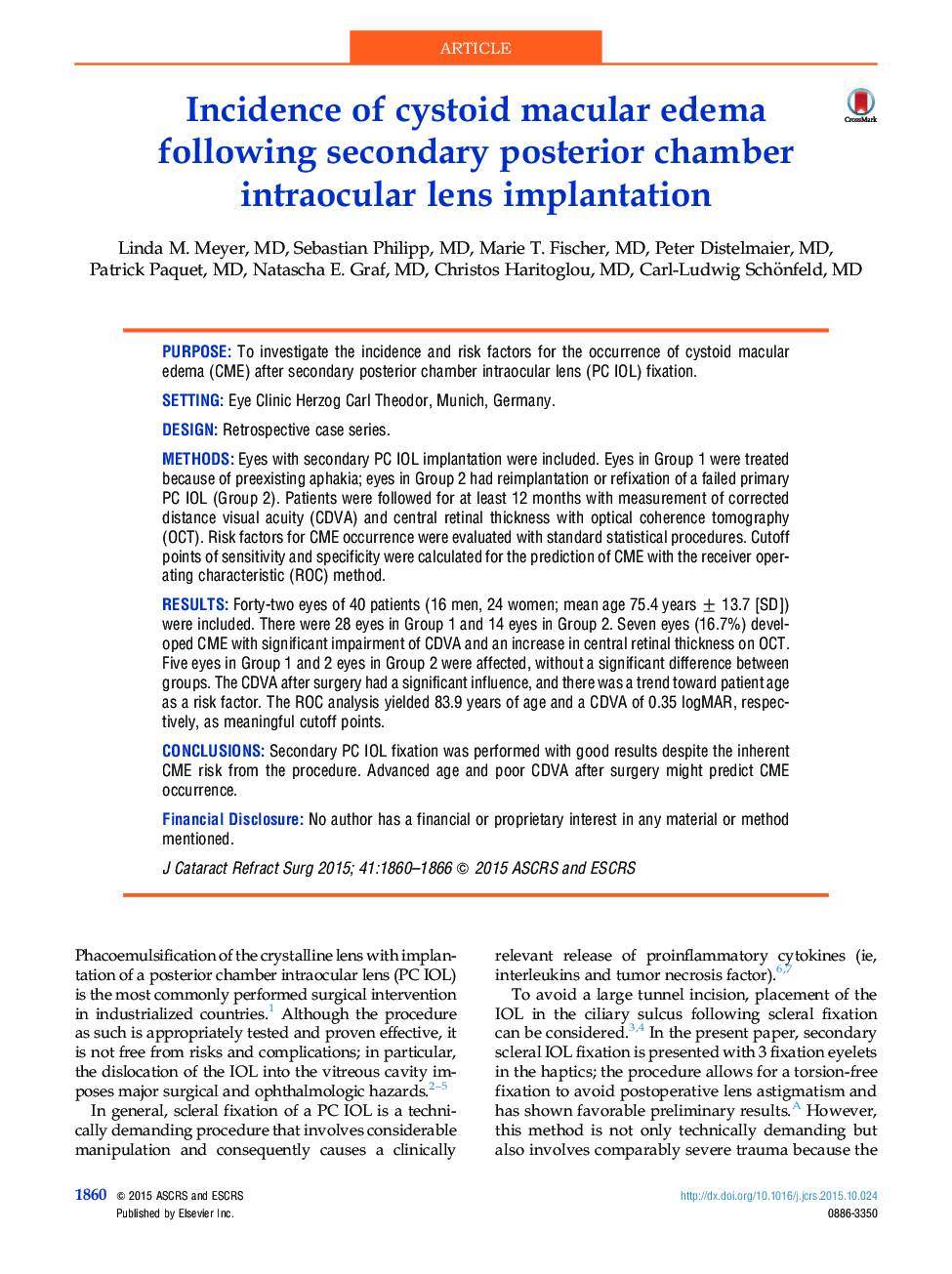| کد مقاله | کد نشریه | سال انتشار | مقاله انگلیسی | نسخه تمام متن |
|---|---|---|---|---|
| 6198203 | 1261948 | 2015 | 7 صفحه PDF | دانلود رایگان |
PurposeTo investigate the incidence and risk factors for the occurrence of cystoid macular edema (CME) after secondary posterior chamber intraocular lens (PC IOL) fixation.SettingEye Clinic Herzog Carl Theodor, Munich, Germany.DesignRetrospective case series.MethodsEyes with secondary PC IOL implantation were included. Eyes in Group 1 were treated because of preexisting aphakia; eyes in Group 2 had reimplantation or refixation of a failed primary PC IOL (Group 2). Patients were followed for at least 12 months with measurement of corrected distance visual acuity (CDVA) and central retinal thickness with optical coherence tomography (OCT). Risk factors for CME occurrence were evaluated with standard statistical procedures. Cutoff points of sensitivity and specificity were calculated for the prediction of CME with the receiver operating characteristic (ROC) method.ResultsForty-two eyes of 40 patients (16 men, 24 women; mean age 75.4 years ± 13.7 [SD]) were included. There were 28 eyes in Group 1 and 14 eyes in Group 2. Seven eyes (16.7%) developed CME with significant impairment of CDVA and an increase in central retinal thickness on OCT. Five eyes in Group 1 and 2 eyes in Group 2 were affected, without a significant difference between groups. The CDVA after surgery had a significant influence, and there was a trend toward patient age as a risk factor. The ROC analysis yielded 83.9 years of age and a CDVA of 0.35 logMAR, respectively, as meaningful cutoff points.ConclusionsSecondary PC IOL fixation was performed with good results despite the inherent CME risk from the procedure. Advanced age and poor CDVA after surgery might predict CME occurrence.Financial DisclosureNo author has a financial or proprietary interest in any material or method mentioned.
Journal: Journal of Cataract & Refractive Surgery - Volume 41, Issue 9, September 2015, Pages 1860-1866
